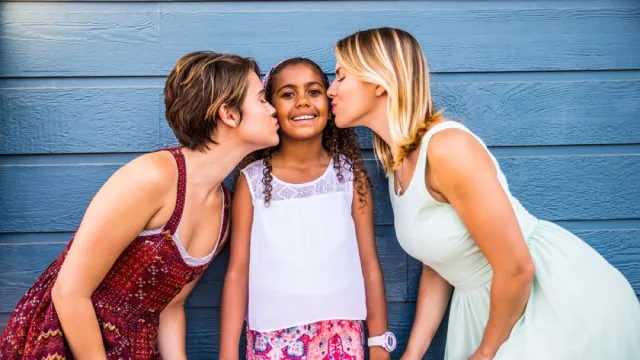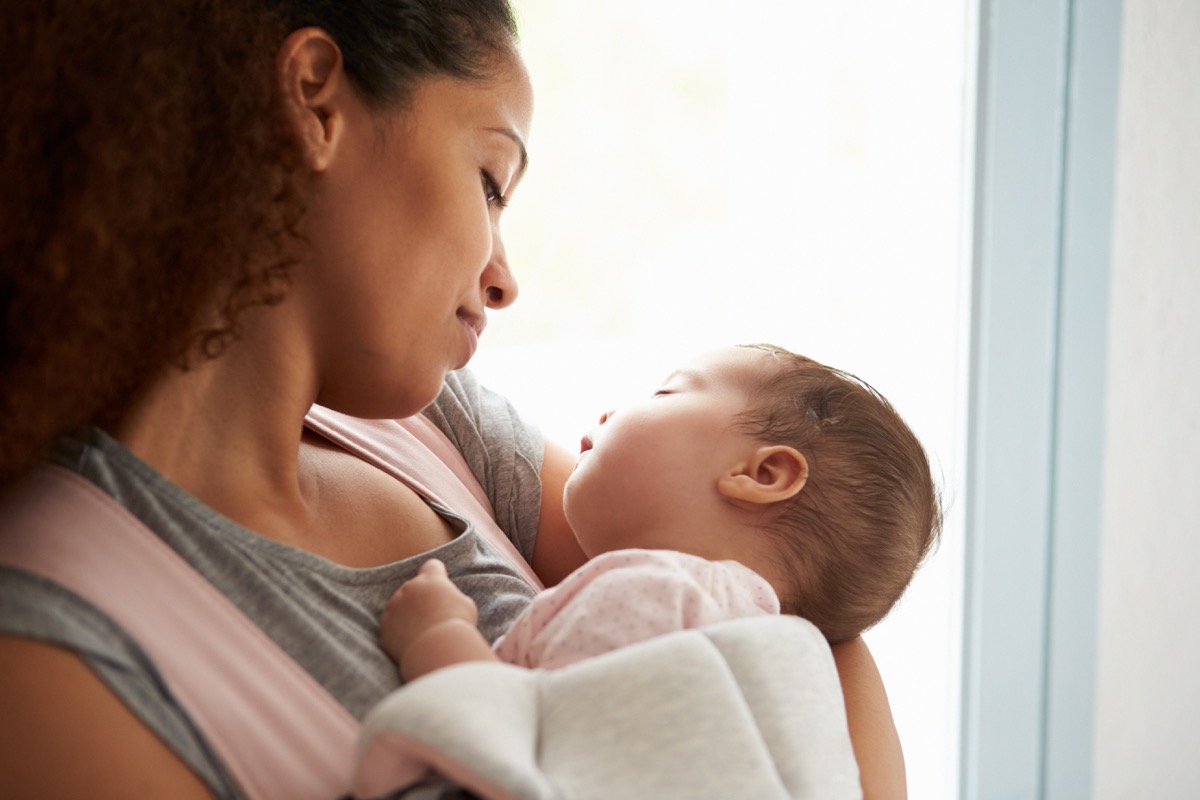11 Ways That Families Have Evolved in the Last Decade

Our cultural definition of what qualifies as a family has changed dramatically over the last 50 years. The old cliché of a two-parent-two-kid household—where the dad goes to work and the mom cooks dinner—is far from the only option in the modern world. But it may surprise you to learn that families have been changing faster than ever, and in ways you might not even have noticed. In just the last 10 years, family dynamics that would’ve once been unthinkable are now the norm. From the number of kids couples are having to the rise of home-schooling, here are 11 ways that families have evolved over the past decade.
1
Same-sex parents are becoming more accepted.

Support for LGBTQ+ adoption has never been higher. In fact, according to a 2019 Gallup poll, 75 percent of Americans believe same-sex couples should be allowed to adopt and raise children. In 1998, 35 percent of Americans supported same-sex couple adoption rights.
And their support isn’t just based on their personal beliefs. There’s new evidence, like this 2018 study published in the Journal of Developmental & Behavioral Pediatrics, that the psychological well-being of kids raised by same-sex parents is no different than that of kids raised by opposite-sex parents.
2
More parents are home-schooling.

Home-schooling has been legal in the U.S. since 1993, but according to the National Center for Education Statistics, home-schooled children have doubled since 1999. Today, 1 in every 33 kids is being educated at home. Whitney Koski, a New York City mom who opted to homeschool her 11- and 9-year-old daughters, told the New York Post that she “didn’t want our girls being put in an environment where everyone had to learn the same way.”
3
More family dinners consist of fast food.

Fast food may not be the best source of nutrition for growing bodies, but it’s a more popular option than ever for parents. In 2018, a survey by the University of Connecticut’s Rudd Center for Food Policy and Obesity found that 91 percent of parents had bought at least one fast food meal for their child in the past week, compared to 79 percent in 2010.
4
The age of first-time moms is on the rise.

The age at which women have their first child has slowly risen since the ’70s, but there’s been a sharp increase over the last 10 years. The average age is now 26.3, according to a 2016 study by the National Center for Health Statistics. It’s even higher in cities like San Francisco and New York, where women often wait until they’re 31 or 32 to have their first child, as noted in a 2018 New York Times report.
5
More families are having just one child.

Parents magazine called it “the rise of the ‘one-and-done.'” Families just aren’t ballooning to Brady Bunch sizes anymore. In fact, the number of married couples who’ve decided that one kid is enough has doubled since the ’70s, according to a Pew Research Center survey.
6
Interfaith marriages are more common.

Marrying someone who shared your religious beliefs used to be a given. But a 2015 Pew Research Center survey found that since 2010, 39 percent Americans have picked a spouse who doesn’t share their particular religious views. In 1999, that statistic was 29 percent.
7
But fewer couples are getting married overall.

The rate of unmarried couples is at a “record high,” according to a 2014 Pew Research Center survey, with one in five adults over 25 opting not to get married at all. “It’s becoming more acceptable to be in a long-term, committed relationship without a legal document,” Pamela J. Smock, director and research professor at the Population Studies Center at the University of Michigan-Ann Arbor, told NBC News in 2013.
8
More moms are working and staying at home.

The gender stereotypes of the past—when men went to the office and women stayed home to raise the children and clean the house—are so last millennium. According to a 2019 NBC News report, “Since remote work has been on the rise over the last decade, there has also been an increase in the number of stay-at-home moms who work from home.” In fact, according to FlexJobs’ 2018 survey, 65 percent of stay-at-home moms said they both need and want to work.
9
Kids are getting more independence.

When New Yorker Lenore Skenazy let her 9-year-old son take the subway home alone in 2008, it caused a public outcry. That may have been an extreme example, but 10 years later, free-range parenting has become a nationwide phenomenon and a cultural movement. In 2018, Utah became the first U.S. state to enact legislation that protected parents who let their kids venture out into the world without them, proving attitudes about children and independence have seen a major shift.
10
Parents are oversharing on social media.

Listen, we get it. Every proud parent feels the urge to share adorable photos of their kids on Facebook and Instagram. But over the past decade, things have gotten a little out of hand. A 2015 report by Nominet found that the average kid has nearly 1,500 photos of them posted online before their fifth birthday. “I feel like I have absolutely no privacy,” a desperate middle-school kid confided on Reddit recently. “I can’t talk to my own mother for fear she’ll post it on social media. I’m her child, not her dog, and I’d like to be treated as a human being.”
11
And yet, more parents are getting freaked out about the internet.

The biggest fear among parents in 2019 wasn’t something that could cause real harm to their children, but rather a meme gone awry. Momo, a bird-like creature with creepy eyes, was linked to a widespread urban legend about challenging kids on YouTube to harm themselves. The whole thing was a hoax, but the hysteria reflected very real fears of parents in an internet age. The 2018 American Family Survey revealed that the number one concern among parents about their kids was the “overuse of technology,” which beat out drugs, sexual activity, and mental health problems.